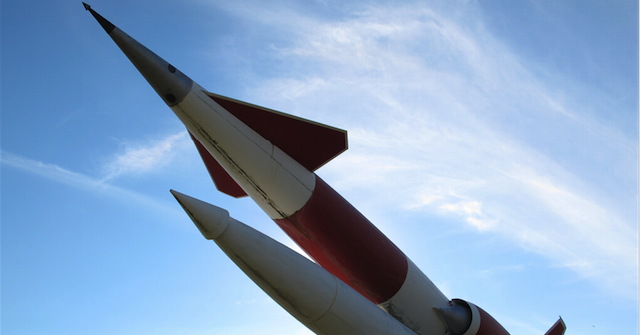Nuclear Weapons and Australia’s Defence White Paper

Australia’s recently released 2016 Defence White Paper is premised on a strategic outlook that overlooks the nuclear threat in our own backyard. The Indo-Pacific region is the global vortex of nuclear weapon threats with six of the world’s nine nuclear-armed states involved. India, Pakistan and China are trapped in a three-way nuclear weapons relationship that had no parallel in the Cold War strategic rivalry, which makes Australia’s strategic region that much more dangerous and unpredictable. North Korea continues to defy international opinion by developing nuclear weapon and ballistic missile delivery systems. The established nuclear powers (China, Russia and the US) ultimately back their regional strategies with nuclear deterrence.
The White Paper says little about these threats presumably on the grounds that Australian Defence Force capabilities are not able to deal with them. We learn two thirds of the way through the White Paper in Chapter 5.20 that Australia’s only defence against nuclear threats is ANZUS and US extended deterrence. However there is a growing body of opinion that questions the reliability of deterrence and extended deterrence. To put unquestioned reliance in the US nuclear umbrella deprives Australia of policy flexibility and the moral right to lead efforts to fashion an alternative world order where mutually assured destruction is not the ultimate guarantor of our existence. Australia would be wise to acknowledge regional nuclear threats and do more to help mitigate them.
South Asia
The US umbrella has no relevance to our nearest nuclear threat in South Asia. The White Paper acknowledges that “tensions” between India and Pakistan could affect Australia’s security, however references to cooperation with Pakistan and India in Chapters 5.70 and 5.72 make no mention of nuclear issues. With the deployment of tactical as well as strategic weapons in the region and the past history of conflicts, Australia and the world should become more engaged. Defence engagement should support broader security and foreign policy interests in managing and restraining nuclear tensions between China, India and Pakistan. An officials-level ‘strategic dialogue’ is not sufficient. Instead of brushing off the issue as it was in the recent rush by nuclear suppliers – including Australia – to access India’s nuclear power program, Australia should attempt to make the matter more mainstream.
North Asia
The situation in North Asia is equally fraught given the significant likelihood of Australia being drawn into conflicts. The White Paper in Chapter 5.67 refers to cooperation with South Korea on non‑proliferation but does not touch on the weapons of mass destruction (WMD) threats that Australian forces would face in any but the most optimistic scenarios for conflict in the region. The world has struggled for decades to avert conflict on the Korean Peninsula and with the added nuclear element the risks are higher than ever. Containing DPRK nuclear and missile threats and dampening a seemingly growing – if still small – interest in nuclear weapons in Japan and South Korea must remain one of Australia’s highest security priorities.
Non-proliferation norms and the Rules–based Global Order
The White Paper’s comments on cooperation with South Korea highlight the perception amongst Australian defence strategists that non‑proliferation, disarmament and arms control measures are simply tools to uphold the rules-based global order. Rather, the highly-developed and highly-effective global counter-proliferation regime should be seen as a critical component of the global order that the White Paper asserts so frequently and properly. Indeed, it should be a central objective of Australia’s defence posture.
Countering Nuclear Threats: Policy and Capabilities
The White Paper foreshadows in Chapter 2.106 that Australia will continue to do its ‘part’ in countering nuclear threats; the Indo-Pacific strategic outlook dictates it do more. Australia has historically been a prominent supporter of global efforts to contain and end WMD proliferation, but its reputation is eroding. Resource pressures have reduced the effort and expertise across government, while the international response to WMD threats is becoming more complex and harder edged.
Despite Australian WMD expertise and personnel playing an important role in assessing the WMD inventories of Saddam’s Iraq, no such contribution was made to the UN-led and US backed international project to destroy Syria’s chemical weapon stockpile. Australia has a WMD response capability to support domestic situations and for the development of chemical, biological and radiological protection equipment for the armed forces (Chapter 3.15). This expertise should be enhanced and made available to properly-mandated interventions. The expertise could also be used for strengthening the international WMD control machinery.
In elaborating the role of one of Australia’s key intelligence facilities, the White Paper notes its contribution to intelligence on ‘priorities’ such as terrorism and the proliferation of weapons of mass destruction (Chapter 5.24). Good intelligence is vital to the detection and disruption of proliferation supply networks. What the paper does not discuss however is the use made of this intelligence. As Australia appears to be downgrading the priority of WMD issues, it is likely that proliferation intelligence will only be used for the purposes of information trading. Instead, Australia should be making a greater contribution to regional counter proliferation efforts including by utilisation of all available intelligence sources and expertise across all government agencies.
Facing the Realities
Considering the range of security threats that Australia will be facing over the next twenty years, it would be wise to recall how different the strategic outlook might have been if not for the game-changing commitments of Australia and its regional partners in the 1970s to forego nuclear weapons and sign the Nuclear Non Proliferation Treaty (NPT). If not for those decisions, the White Paper would have had a very different starting point.
With the UN Security Council now committed to stronger sanctions on North Korea, including inspection of shipping, Australia will be expected to contribute, either by offering assets of its choosing or waiting until asked. It would be quite consistent with Australia’s commitment to increase the tempo of regional defence engagement for a share of that increase to have a WMD focus, though the Proliferation Security Initiative and bilaterally. For a tiny outlay in the context of overall defence spending Australia could help reclaim its reputation for leadership on global WMD arms control and non-proliferation efforts.
John Tilemann is a former diplomat whose postings included the International Atomic Energy Agency and as Ambassador to Jordan. He is currently the Director of Research for the Asia Pacific Leadership Network on Nuclear Non-Proliferation and Disarmament at the Australian National University. This article is published under a Creative Commons Licence. It can be republished with permission.





